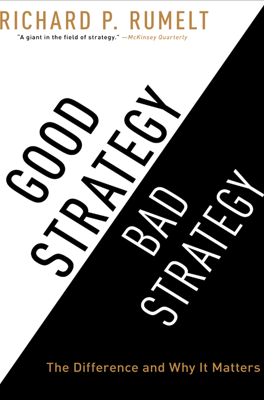Bad Strategy
Identifying Bad Strategy
A bad strategy is not just the absence of a good strategy; it arises from specific misconceptions and leadership dysfunctions. It can be recognized by particular hallmarks:
- Fluff: This is the use of high-sounding but ambiguous language that masks a lack of substance.
- Failure to Face the Challenge: Bad strategy fails to define or recognize the real problem, making it impossible to devise an effective approach.
- Mistaking Goals for Strategy: This involves confusing aspirations (what one wishes to achieve) with strategy (the plan to get there).
- Bad Strategic Objectives: These are often impractical or disconnected from the company's core issues.
Origin of "Bad Strategy"
The concept of "bad strategy" emerged from discussions among top defense and policy experts during seminars focused on national security strategy. Strikingly, after the Cold War and following the 9/11 attacks, there has been a notable decline in the quality of strategic planning at the national level. It became evident that recent national security strategies were extensively flawed, oversimplified with lists of goals lacking actionable strategies.
Examples of Bad Strategy in Different Contexts
- Fluff in Corporate Strategy: An example of fluff in the corporate world is a bank describing its ordinary banking business with inflated terms like "customer-centric intermediation.”
- Failures in Historical Strategic Planning: The case of International Harvester exemplifies a company that failed to confront its inefficiencies and labor issues, leading to its downfall despite extensive strategic planning.
- Mistaking Goals for Strategy in Business: Examples here include Chad Logan’s graphics arts company, which set ambitious financial targets without clear plans for achieving them.
- Bad Strategic Objectives in Education: David Brewer’s superintendent tenure at LAUSD aimed to prioritize high-priority schools but failed to address the deeper systemic issues, leading to unachievable objectives.
Consequences and Impact of Bad Strategy
Bad strategy can lead to misdirected efforts, resource wastage, and failure to achieve key objectives. It's crucial for leaders to detect and correct bad strategy to avoid these pitfalls and enhance overall effectiveness.
These insights into bad strategy underscore the importance of clearly defined problems, actionable plans, realistic objectives, and avoiding the allure of jargon that obscures more than it clarifies. They show that true strategic competence requires a deep understanding of the specific challenges an organization or a nation faces, and the creation of a coherent approach to overcoming them.
